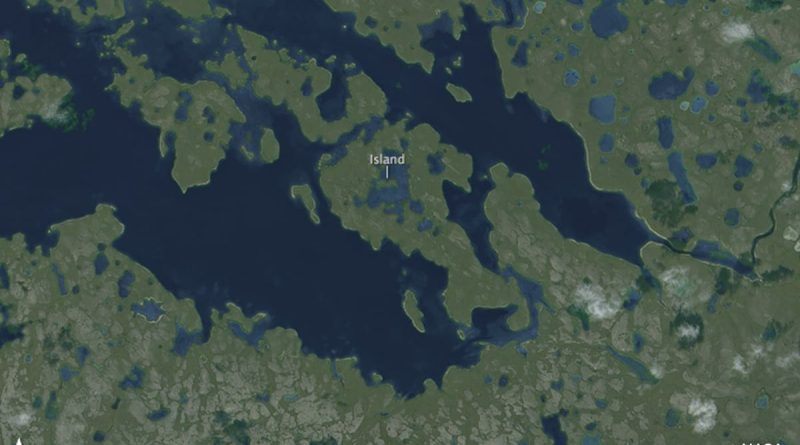An Island within a Lake on an Island within a Lake on an Island within a Lake on an Island within…
The World’s Largest Island-in-a-Lake-on-an-Island-in-a-Lake-on-an-Island in Canada
A unique and fascinating landform has been discovered within Victoria Island in Canada’s Nunavut Territory. This nameless island holds the rare distinction of being the world’s largest island-in-a-lake-on-an-island-in-a-lake-on-an-island. Satellite images captured by the Operational Land Imager (OLI) on Landsat 8 have confirmed the presence of this extraordinary geological formation.
Description of the Landform
At the center of this complex landform lies a seahorse-shaped island, approximately 1,000 feet wide, situated within a small, unnamed lake. This lake is part of a larger island, which in turn sits inside a long, finger-shaped lake about 90 kilometers inland from Victoria Island’s southern coast. Guinness World Records has officially recognized this location as the largest of its kind.
Exploring the Potential of the Region
Victoria Island, also known as “Kitlineq” by the Inuit, is the eighth-largest island in the world and is part of the vast Canadian Arctic Archipelago. The region is home to thousands of islands and millions of post-Ice Age lakes, making it a potential hotspot for undiscovered landforms of a similar nature. Despite its vast expanse, much of the Arctic landscape remains unexplored.
Unveiling Unusual Landforms
The discovery of this unique island-in-a-lake-on-an-island-in-a-lake-on-an-island underscores the potential for more unusual landforms to be uncovered as mapping technologies and satellite imagery continue to improve. Many recursive islands and lakes, which follow a pattern of islands within islands or lakes within lakes, have been identified using satellite imagery. However, the extreme remoteness of the Arctic landscape suggests that this particular island may have never been visited by humans.
Past Discoveries and Ephemeral Islands
In the past, NASA satellites have captured the emergence and disappearance of temporary islands in various parts of the world. For instance, a temporary island was observed off the coast of Azerbaijan in the Caspian Sea, created by an eruption from the Kumani Bank mud volcano. This landmass, first spotted in early 2023, had eroded completely by the end of 2024. Similar events have been recorded in the area dating back to 1861, highlighting the dynamic nature of geological formations in remote and geologically active regions.
As our understanding of Earth’s geology continues to evolve, the discovery of unique and unusual landforms like the world’s largest island-in-a-lake-on-an-island-in-a-lake-on-an-island in Canada sheds light on the complexity and diversity of our planet’s landscapes. Further exploration and advancements in technology may reveal even more hidden wonders waiting to be uncovered.

